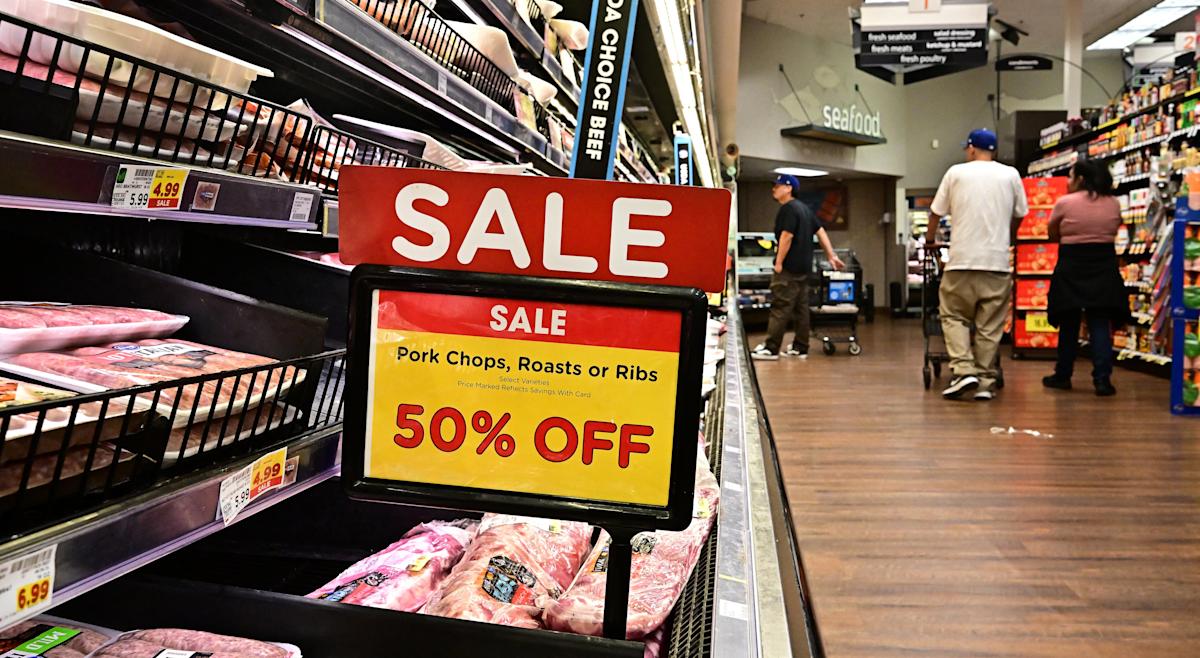Tight budgets and stretched wallets are no longer just a problem for lower-income Americans.
Inflation is putting pressure on nearly everyone, even households earning six figures. As prices stay stubbornly high, more Americans across different income groups are feeling anxious about their finances and rethinking how they save, spend and plan for the future.
A recent TD Bank survey reported nearly 90% of respondents said rising costs have impacted their spending. When asked how they’ve adjusted their spending, nearly 30% reported cutting back on nonessentials, while nearly 20% are relying on couponing, sales and discounts in order to find savings (1).
The squeeze is being felt regardless of income: 84% of respondents with household incomes of $100,000 or more reported feeling the effects of inflation, and roughly 88% of respondents with household incomes less than $50,000 reported the same.
The top pain points causing consumers to adjust? Groceries, gas and dining out: 46% of respondents cited groceries as their top spending category, gasoline was the second highest at 13%, and restaurant expenses were third at 9%.
Nearly half of all responding consumers say their grocery prices increased the most over the last year, while 10% said gassing up was their biggest increase.
Even though inflation has plenty of Americans on edge — more than 80% of participants in a 2025 LifeStance Health survey said they’re experiencing “stressflation” (2) — not everyone is feeling negatively about the economy.
In fact, the perceived economic outlook is pretty split, according to TD Bank, with 40% of respondents feeling optimistic, 38% feeling pessimistic and 22% feeling neutral. Around 41% of respondents claim they feel the same about their current financial situation as they did six months ago, while 35% even reported feeling better (1).
Meanwhile, consumer spending remains strong, according to the Bureau of Economic Analysis’s Personal Consumption Expenditures price index for August 2025, which increased 2.7% from last year (3). So, if Americans are still making the purchases they need, how are they getting around the high prices?
Story Continues
Trending: Are you richer than you think? Here are 5 clear signs you’re punching way above the average American’s wealth
Credit cards have become a lifeline for many Americans, covering even everyday essentials like groceries and gas. About 46% of adult cardholders carried a balance on a credit card for at least one month in the past year, according to the Federal Reserve (4). Some consumers are using plastic strategically, leveraging cash-back rewards and card perks to squeeze out extra savings at the supermarket and the pump.
“There is a common misperception of credit card spending as frivolous, but that just isn’t the reality for most Americans,” said Chris Fred, head of credit cards and unsecured lending at TD Bank (1). “These survey findings show that Americans are using credit cards to buy essentials like gas and groceries, and they are maximizing the rewards like cash back to make the most of their spend.”
Depending on budget restrictions and family size, grocery bills for American households can total more than $1,000 a month. Consistent credit card usage with cash back rewards, as long as payments are made on time, can cushion the blow on grocery spending.
“Consumers are savvy, and when they see the economy begin to shift, we see them adjust their everyday spend,” said Scott Adamo, head of U.S. franchise unsecured lending at TD Bank. “We’ve found time and time again that when inflation is taking a toll, consumers value flexibility and cash back rewards from their credit cards. The right credit card can really help when budgets are tight.”
Credit cards can be a useful tool when prices are high, but they come with real risks, especially for anyone who isn’t diligent about paying off their balance each month.
If you pay in full, cash-back rewards and points can help you save on groceries, gas and dining out. But once you start carrying a balance, interest and penalties can quickly erase those gains, and the lure of rewards can also push you to overspend.
If you’d rather not lean on credit cards to weather inflation, there are safer ways to manage rising costs, from cutting recurring expenses to building a cash buffer for essentials.
To cut your grocery bill, plan meals in advance and shop with a clear list to avoid impulse buys. You can also opt for store brands over name brands, and take advantage of warehouse clubs or bulk deals when it makes sense.
Another great way to save at the grocery store is to clip digital or paper coupons before heading out, and sign up for free grocery rewards programs.
You don’t have to ditch every nonessential, but it may be time to find balance between what you want and what you need. Try committing to a budgeting rule and sticking with it, like the 50/30/20 rule, which allocates 50% of your income to needs, 30% to wants and 20% to savings.
Join 200,000+ readers and get Moneywise’s best stories and exclusive interviews first — clear insights curated and delivered weekly. Subscribe now.
We rely only on vetted sources and credible third-party reporting. For details, see our editorial ethics and guidelines.
TD Bank (1); LifeStance Health (2); BEA (3); Federal Reserve (4); Instacart (5)
This article originally appeared on Moneywise.com under the title: Even households making $100K are now pulling back on spending and rethinking their expenses. Here’s why
This article provides information only and should not be construed as advice. It is provided without warranty of any kind.

